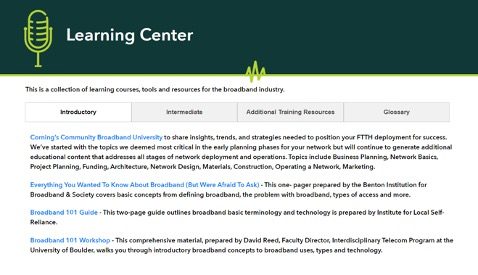

Let’s take a look at some viable options carriers, service providers, municipalities, technology equipment providers and professional service organizations can leverage to resolve labor constraints and meet deployment demands successfully.
Broadband service providers must ask themselves how they will meet the demands of each phase of a project’s lifecycle from needs assessment, business case, design, construction, deployment, and on into Day Two subscriber support, maintenance and expansion.
There is a broader conversation regarding broadband workforce labor constraints occurring during a new fiber network build. Let’s look at how this affects people, process, and technology and examine what it takes to achieve success.
Infrastructure legislation and funding has led to the proliferation of new network builds. With this demand, workforce supply has not kept up. How do we attract people to the industry? How do we train them? How do we retain them?
Attracting new talent to this industry is key. Many colleges, associations and organizations are now offering degrees in mapping and GIS technology, which can be parlayed into a career in telecommunications. In addition, a simple internet search of “fiber network skills training” yields a long list of sources such as the University of Central Florida Continuing Education Program, Global Knowledge, Fiber Optics Association Inc., The Fiber School., and The Broadband Bunch.

Service providers and technology vendors are also taking matters into their own hands by creating training centers of their own. CommScope Infrastructure Academy, for example, provides in-depth online training courses on today’s advanced wireless, broadband and enterprise cabling solutions. Quanta Services offers their personnel a state-of-the-art training facility in La Grange, Texas. On the 2,200-acre campus, employees receive hands-on instruction from master trainers in a controlled environment, focusing on safety, skill development and certifications.
So what are the broadband skills or jobs with the greatest demand? If we simply outline the project life cycle, we can predict the peaks for various skills.
| Business case & High-level design | Business Analyst & Architect |
| Detail design & plan | Program Manager, Design Engineers, Procurement |
| Construction | Engineers & Field Technicians |
| Network Test & Acceptance | Field & Remote Techs and Engineers |
| Subscriber Deployment, Support & Network Maintenance | Customer Service, Field & NOC Techs, Engineers |
If you break it down, some job types may be outsourced rather than completed by full-time employees. For example, a municipality may be better served to contract out significant portions of the design and build and then hire long-term employees for operations. There also may be opportunity to partner with an existing service provider that already has these business operations in place but has struggled with the justification of construction due to cost to payback requirements in the non-subsidized world of the past.
Documenting the breakdown of processes helps with training of new people to the industry. This, combined with adding automation to as many processes as possible, simplifies processes and frees up your talent to work on higher-level projects and tasks. In fact, a recent survey conducted by Amdocs shows that 76% of respondents highlighted tighter integration of BSS and OSS as a key priority, indicating strong demand from decision-makers for flow-through service management and monetization capabilities to automate and integrate operations from the user-engagement layer all the way to the network. The survey results make it clear that in the era of 5G and cloud networks, CSP executives have high and diversified expectations for automation of their service operations and OSS.
Today’s service management software provides increased efficiency of scarce skills through compressing siloed systems and adding automation. By creating a single platform that joins customer activation and financial/operations, field service management, device management and advanced analytics, employees become more efficient and effective.
Advances in workforce management and remote support tools accelerate the training curve. These tools provide in the field, in-hand, animated how-to guides. This creates “leveling” of skill sets. It also allows high value skills to be executed from anywhere. This can reduce travel time of individuals with these high demand skills.
Advances in products and software sets reduce time or skill requirements to accelerate deployment. By following industry standards set up by TM Forum, providers have a framework that simultaneously reduces the number of steps required to launch new services and and increases the viability of the final network.
An organization preparing for a fiber deployment will be well prepared with some diligent planning and introspective evolution around finding the people with the necessary skills, defining their processes, and identifying technology tactics and product before launching their build. These elements are tightly interconnected and require close coordination across organizational boundaries. But, when used in combination, allow an individual fiber deployment, to succeed at a time of high demand on resources.